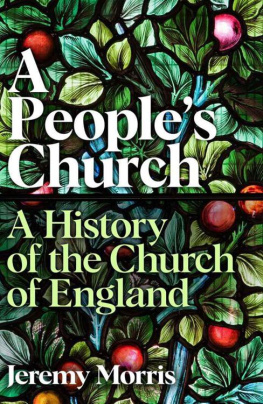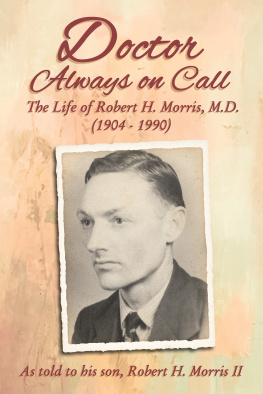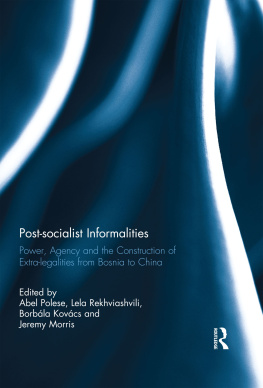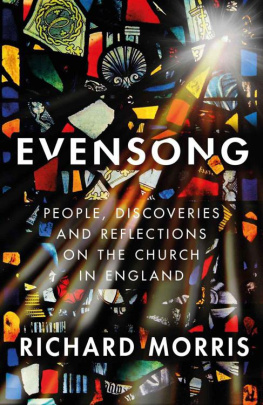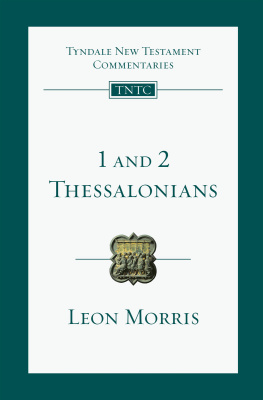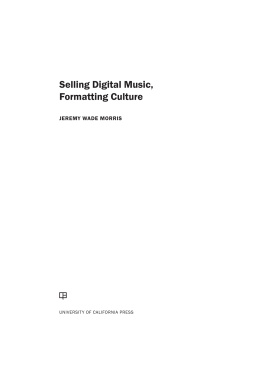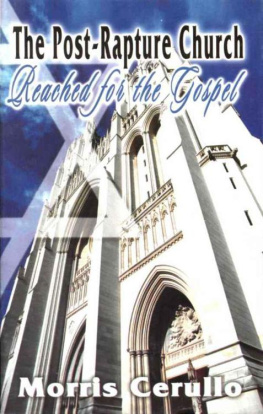Jeremy Morris - A Peoples Church
Here you can read online Jeremy Morris - A Peoples Church full text of the book (entire story) in english for free. Download pdf and epub, get meaning, cover and reviews about this ebook. year: 2022, publisher: Profile, genre: Religion. Description of the work, (preface) as well as reviews are available. Best literature library LitArk.com created for fans of good reading and offers a wide selection of genres:
Romance novel
Science fiction
Adventure
Detective
Science
History
Home and family
Prose
Art
Politics
Computer
Non-fiction
Religion
Business
Children
Humor
Choose a favorite category and find really read worthwhile books. Enjoy immersion in the world of imagination, feel the emotions of the characters or learn something new for yourself, make an fascinating discovery.
- Book:A Peoples Church
- Author:
- Publisher:Profile
- Genre:
- Year:2022
- Rating:4 / 5
- Favourites:Add to favourites
- Your mark:
- 80
- 1
- 2
- 3
- 4
- 5
A Peoples Church: summary, description and annotation
We offer to read an annotation, description, summary or preface (depends on what the author of the book "A Peoples Church" wrote himself). If you haven't found the necessary information about the book — write in the comments, we will try to find it.
A Peoples Church — read online for free the complete book (whole text) full work
Below is the text of the book, divided by pages. System saving the place of the last page read, allows you to conveniently read the book "A Peoples Church" online for free, without having to search again every time where you left off. Put a bookmark, and you can go to the page where you finished reading at any time.
Font size:
Interval:
Bookmark:
A PEOPLES CHURCH
A PEOPLES CHURCH
A H ISTORY OF THE C HURCH OF E NGLAND
JEREMY MORRIS

First published in Great Britain in 2022 by
Profile Books Ltd
29 Cloth Fair
London
EC1A 7JQ
www.profilebooks.com
Copyright Jeremy Morris, 2022
1 3 5 7 9 10 8 6 4 2
Typeset in Dante by MacGuru Ltd
The moral right of the author has been asserted.
All rights reserved. Without limiting the rights under copyright reserved above, no part of this publication may be reproduced, stored or introduced into a retrieval system, or transmitted, in any form or by any means (electronic, mechanical, photocopying, recording or otherwise), without the prior written permission of both the copyright owner and the publisher of this book.
A CIP catalogue record for this book is available from the British Library.
ISBN 978 1 78125 249 9
eISBN 978 1 78283 053 5
C ONTENTS
PREFACE: THE REAL HISTORY OF THE CHURCH OF ENGLAND
Enormous simplifications were possibly necessary to carry a deeper truth than lay on the surface of a mass of unsorted detail. That was, after all, what happened when history was written; many, if not most, of the true facts discarded. Anthony Powell, Temporary Kings (1973)The church of St Peter and St Paul, Chaldon, lies at the end of a long lane snaking along a ridge of the North Downs, just beyond the outer limits of the London suburbs. Begun some time before the Norman Conquest, it is a small, concentrated bundle of different spaces reflecting different periods of church architecture. Even today, when on fine days the downs will be teeming with people walking their dogs, playing with their children or simply out for a stroll, the church seems somehow a step beyond settled human community. To enter it is to enter a remote, silent world, and to be confronted by a shocking reminder of a different age and different values. For Chaldon is best known for its doom painting, a sole survivor of what was once a multi-coloured interior. Painted late in the twelfth century, on the west wall rather than above the chancel arch, as would have been typical of later, conventional doom pictures, its vivid colours have faded to a muddy cream on a red brick background. Like many medieval wall paintings it owes its survival now to overpainting with whitewash at the Reformation, and the careful uncovering and retouching by a gifted amateur in the nineteenth century.
It is not the very existence of this painting that is shocking, but the sharpness and brutality of its division between the saved and the damned, and the complexity of its theological vision. Covering most of the west wall, it is bisected vertically by the ladder of salvation, and horizontally by a thick line dividing the blessed above, and the damned below. Below the line, devils torment figures representing the seven deadly sins, as souls tumble from the ladder into the fires below. Above the line, the saved are ministered to by angels, as Christ is figured spearing a prostrate Satan. It is hard enough, in the twenty-first century, to imagine how anyone can have thought that such a vision of the human condition would not have stirred deep revulsion in the minds of those who saw it, entering the church all those centuries ago when it was first painted. It is harder still to conceive of a mental and spiritual world view so vivid and sharp in its contrast of light and darkness, of good and evil, which was yet almost universally accepted at the time as the world of meaning within which all important decisions in life had to be constructed.
It would be easy to think that somehow this world view was inflicted on an unwilling population, or manipulated as a mechanism of fear and control by a self-contained clerical elite, but that would be to adopt a thoroughly modern prejudice to analyse the beliefs of our ancestors. For those and they are of course many now who have little or no affiliation with formal religious belief, often their understanding of Christianity is shaped by a narrative that sees the Church as dedicated to promoting intolerance and sexual repression or control, with a dark history of covering up abuse and colluding in violence. That this has been the case at times in the past is undeniable. But the particular shape in which this narrative is cast today is a modern phenomenon, taking its lead from the assumption that religion, and the institutions which promote it, are at best simply one small subset of the whole spectrum of human ideas and activity, having little to do with knowledge of the material world, and badly placed if allowed to lay claim to anything outside the realm of private, inner or individual spiritual thoughts.
For most of the history of Britain, this would have been a very peculiar way to see the world. Until perhaps the mid- or late-nineteenth century though for many a good deal later there was little sense in which religion was simply an additional or optional feature of life, a sort of and tacked on to whatever account one might give of the material conditions in which lives were lived. This is not to say that you find, in the past, people doing nothing but talk about religion. But it was none the less so bound into their culture, values and beliefs that it would have made little sense for them to see it as anything other than the overarching framework in which they interpreted the world. It formed, then, something like a sort of common sense that lurked in the background of all of the decisions they had to make, the experiences they had, and the encounters that one way or another affected their lives. Biblical scholars sometimes speak of the Sitz im Leben of particular Biblical texts, that is, the life context in which specific teachings are expounded, and on which they depend. In a sense, that is precisely how we have to see the history of religion: it is not separable from the rest of human society, but woven in and through it.
To understand the past, then, and the history of religion, a considerable leap of imagination is required. We cannot assume that the Church today is what it was in the eighteenth century, or in the sixteenth century, let alone in the eleventh. Trying to tell the history of a single institution, the Church of England, in the short compass of a single book is a very tall order, and it really requires a constant attention to broader historical themes and trends the changing Sitz im Leben that help to shape and give form to the particular modes in which religious ideas and practices are expressed.
So the history of the Church of England cannot be told as if it was a tale of attenuation as if one can start from what the Church was say five centuries ago, and assume that it is simply much the same now, but reduced in following to a small minority of the population. What it was then, in itself, is not the same as it is now, just as peoples expectations of it, and their ideas about it, have changed dramatically since then. It is important to emphasise this from the outset, because believers and non-believers alike often collude in seeing the Church as unchanging: believers, because they like to stress the continuity of tradition over time, and it is tempting then to gloss over the massive changes that have occurred not only in society as a whole, but also internally, in what the Church is and believes; and non-believers, because it is convenient and easy to suppose that the Church that burned heretics at the stake is really the same institution underneath as the Church that runs food banks in the inner city today. Both views are essentially historical nonsense.
But there are continuities, none the less. When Chaldon was built, the community it served was tiny, poor these down-land parishes were almost all poor right up until the arrival of the railways and far from higher ecclesiastical jurisdiction, its bishop sixty miles away in Winchester and the roads dreadful. For centuries, then, this tiny church must have seemed remote from the centre of power. And yet here it is today, still used for worship. Every Sunday, a small congregation assembles here, twice in the morning. At the Reformation, the old Latin rite was discarded and the English rite of the Book of Common Prayer ( BCP ) adopted. Despite all the vicissitudes of English religious history, up until recent times Chaldon church simply reflected the standard worship expected in the Church of England. Then, like many parish churches, within the last half century it has had to face a difficult choice over the style and content of its worship, and so over whether or not it should hold to the traditional services of the BCP or adopt more modern alternatives. Like many churches, it has compromised early morning BCP , with the traditional language addressing God as Thou, or, later in the morning, modern English language, with the hope that families will join in.
Next pageFont size:
Interval:
Bookmark:
Similar books «A Peoples Church»
Look at similar books to A Peoples Church. We have selected literature similar in name and meaning in the hope of providing readers with more options to find new, interesting, not yet read works.
Discussion, reviews of the book A Peoples Church and just readers' own opinions. Leave your comments, write what you think about the work, its meaning or the main characters. Specify what exactly you liked and what you didn't like, and why you think so.

